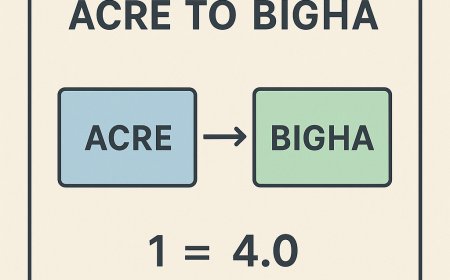Top Real Estate Trends to Watch in 2025: What Buyers and Investors Need to Know

The real estate market continues to evolve, and 2025 is shaping up to be a pivotal year. For buyers, investors, and even those with a scientific curiosity about how economics and housing intersect, understanding current trends can help make more informed decisions. Whether youre considering your first property purchase, adding to a growing investment portfolio, or simply exploring how shifting patterns affect our society, this guide offers a clear, no-nonsense look at whats ahead.
Below, we explore four of the most significant trends impacting real estate in 2025, all backed by data, market observation, and emerging patterns. Well look at the role of technology, sustainability, demographics, and economic shiftsall areas that naturally connect to a science-minded audience.
1. Smart Homes Are Moving From Luxury to Norm
Smart home technology isnt new, but its becoming far more widespread and accessible. In 2025, expect to see continued growth in the number of homes equipped with connected devices, and more importantly, integration that supports energy efficiency and security.
Whats Changing:
-
Wider Integration: In 2025, homes increasingly feature centralized control systems. From HVAC to lighting to security, tech systems are more cohesive.
-
Demand for Data Transparency: Buyers are more interested in homes that offer energy usage stats, air quality metrics, and utility performance.
-
AI-Assisted Property Management: For investors, AI-powered tools help automate maintenance requests, rent collection, and tenant screening.
Scientific minds often appreciate data-driven solutions, and the increasing focus on measurable home performance is aligning well with that mindset. With sustainability and long-term efficiency taking center stage, smart tech is now less about gadgets and more about intelligent living.
2. Climate Resilience is Driving Location Decisions
In 2025, climate change is no longer a distant concern for the real estate marketits a decisive factor for many buyers and investors. Whether its wildfires, floods, or rising sea levels, environmental risks are now part of the equation.
Emerging Patterns:
-
Climate Risk Assessments: Lenders and insurers are using advanced environmental models to determine property risk levels.
-
Migration to Climate-Safe Zones: Cities and regions that have been historically safer from climate extremes (e.g., the Midwest U.S. or certain parts of Canada) are seeing increased demand.
-
Energy-Efficient Renovations: Investors are upgrading properties with green tech like solar panels, insulation, and water conservation systemsnot just for cost savings, but for property value protection.
For science-focused audiences, the use of environmental modeling, GIS data, and climate projections plays a central role in understanding these shifts. Its not just about real estate anymoreit's about forecasting how ecosystems impact our living environments.
3. The Rise of Suburban Science Hubs and Remote Work Towns
While remote work is no longer the new phenomenon it was in 2020, its long-term impacts are still shaping where people choose to live. In 2025, suburban regions and smaller cities with strong research institutions and technical infrastructure are gaining popularity among professionals.
Key Indicators:
-
Hybrid Work is Here to Stay: Many companies now maintain permanent remote or hybrid structures, freeing employees to live outside major metro areas.
-
Affordable Innovation Zones: Cities investing in science parks, biotech hubs, and green technology are attracting both residents and venture capital.
-
Education and Research Access: Proximity to universities, tech incubators, and scientific facilities is becoming more valuable for certain buyers.
Examples include places like Boulder, Colorado; Madison, Wisconsin; and Durham, North Carolinalocations that blend affordability, livability, and access to academic and technological innovation.
4. Data-Driven Investing and Real-Time Market Monitoring
Real estate investors in 2025 are working smarter, not just harder. With the availability of real-time data and predictive analytics, investment decisions are becoming more precise and calculated.
Whats Enabling This Trend:
-
PropTech Platforms: Tools that analyze rental yields, occupancy rates, and price trends in real time are helping investors find undervalued opportunities.
-
Fractional Ownership Models: These allow multiple people to invest in a single propertyideal for those looking to diversify portfolios without full ownership responsibilities.
-
Blockchain for Property Records: Blockchain is being used in some areas to manage title records and streamline transactions, improving trust and efficiency.
These advancements echo scientific methodscollect data, analyze trends, form a hypothesis, and act based on evidence. As the real estate sector adopts a more analytical framework, it opens up new opportunities for individuals who approach investment through a lens of logic and forecasting.
Additional Micro-Trends to Watch:
While the four trends above represent major shifts, there are also smaller developments that are quietly shaping the 2025 real estate environment:
-
Millennial and Gen Z buying power is growing, but they prioritize walkability, digital access, and green design over size.
-
Modular and 3D-printed housing is beginning to scale, promising faster builds and lower costs.
-
Zoning laws are being reformed in many cities to allow for more mixed-use and high-density developments, especially near transit lines.
-
Tenant screening is becoming more standardized through national databases, reducing discrimination and increasing transparency.
What Buyers and Investors Should Do Now
To stay ahead of the curve in 2025, here are a few actionable steps:
-
Stay Informed: Subscribe to real estate news sources that focus on tech, policy, and environmental impactnot just pricing trends.
-
Use Tools: Explore platforms that help analyze properties using metrics beyond square footage and price.
-
Think Long-Term: Consider how the property will perform in different environmental, economic, and technological scenarios.
-
Network Across Sectors: Connecting with experts in environmental science, urban planning, and technology can yield better investment insights.
One Last Note
Interestingly, consumer trends often intersect across industries. Just as homebuyers are now demanding more sustainable features and data transparency in their properties, we see similar shifts in other markets. For example, the vaping industry is rapidly evolving as users seek out the best vape flavors that are not only enjoyable but more health-conscious. These shifts reflect a broader pattern: todays consumersacross housing, tech, and lifestyleare increasingly guided by science, evidence, and a desire for long-term well-being.
By observing and understanding these real estate trends, buyers and investors can make better-informed decisions grounded in logic, not hype. The year 2025 is less about rapid change and more about strategic adaptation. With the right tools and mindset, navigating this landscape is not only possibleits a meaningful opportunity for growth and impact.





























